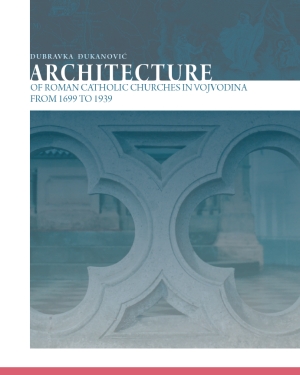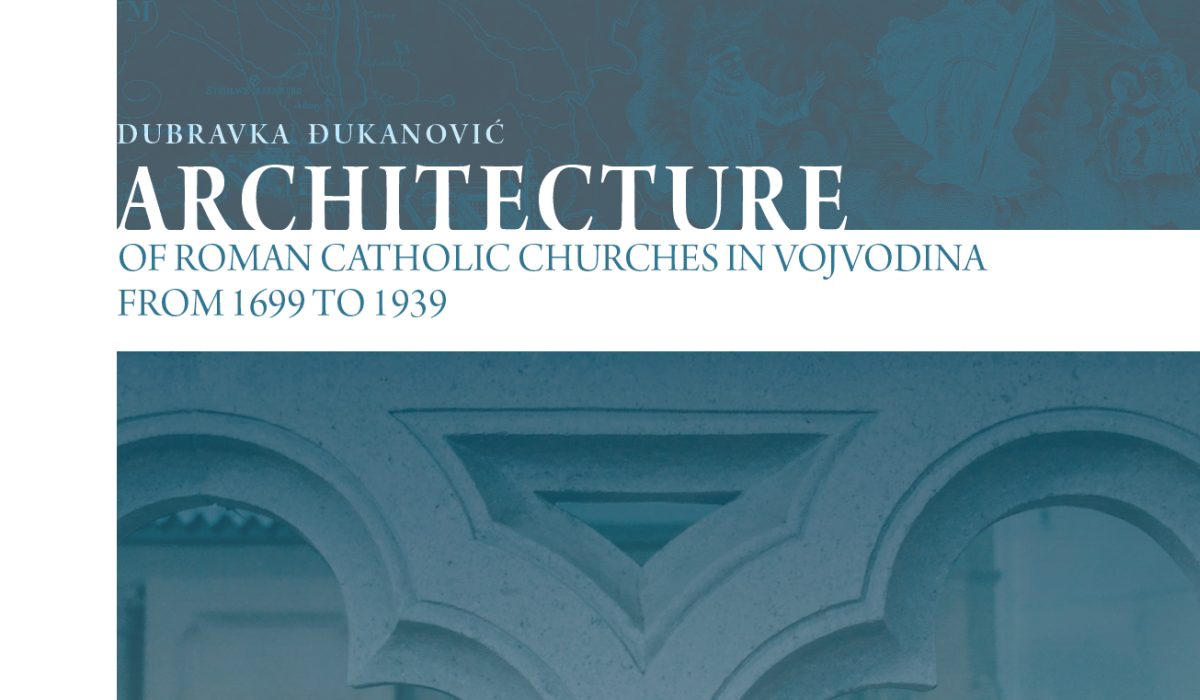Architecture of Roman Catholic Churches in Vojvodina
Dubravka ─Éukanovi─ć: Architecture of Roman Catholic Churches in Vojvodina from 1699 to 1939
The Provincial Institute for the Protection of Cultural Monuments, Petrovaradin Novi Sad, 2015

The monograph ŌĆ×Architecture of Roman Catholic Churches in Vojvodina from 1699 to 1939ŌĆ£ is a bilingual publication which presents the results of many years of research focused on the analysis of a significant corpus consisting of Roman Catholic sacred architecture of Vojvodina of the Modern Era, which was developed as a reflection of the MonarchyŌĆÖs official dominant modern cultural policy, which partly evolved from the idea of religious unitarianism. This complex study argumentatively and scientifically establishes and explains the ways in which the prevailing discursive cultural, socio-political and religious climate in the Habsburg Monarchy and its provinces, and later from 1918 in the Kingdom of Serbs, Croats and Slovenes as well, found its expression in the sacred architecture of the dominant Roman Catholic Church. Tracing the origins and development of architectural expression in 243 sacred buildings, which were analysed, is based on a comprehensive analysis of information gathered during field and archival research conducted in 6 countries, as well as research of published sources (502 referential units), which refer to the architecture of the period under scrutiny (as well as the one before it) in the home country of the author, as well the neighbouring and other countries of Central Europe. A complete synthesis of the research results in an integral text published on 584 pages, accompanied by a significant number of photographs, technical drawings and archival documents (ranging from old maps, graphic representations, photographs, postcards, to projects and written documents), as well as an extensive bibliography, indices and a registry. Of a special value are 11 composite maps and tables presenting all the buildings that were researched, as well as a data analysis of their chronological, stylistic and typological categorization. A complex research protocol implemented in this study, includes eight criteria according to which each building is analyzed and systematized. It produces all the characteristic forms of religious buildings and enables their typological systematization through considerations of developmental processes of religious buildings in relation to their functional, construction, technological and artistic solutions, as well as in relation to their immediate and wider surroundings. Cause and effect relationships between politics, ideology, religion and the role of church in society are taken into consideration, as well as the ways they were manifested in discourses of religious rituals and architecture as its scene. Furthermore, the study establishes the tendencies and directions of the expansion of architectural-artistic and construction influences, and defines the changes in architectural forms, which were caused by changes in religious ideology and architectural program. In addition to integrating the existing and presenting newly acquired knowledge, this research opens a number of questions related to the field of newer architectural history, and directly or indirectly, topics related to it. The newly acquired knowledge and conclusions about the place, role and value of the buildings which were researched are a new, scientifically proven basis for the reinterpretation of the existing valorization of buildings under research in their local, regional and European context.
